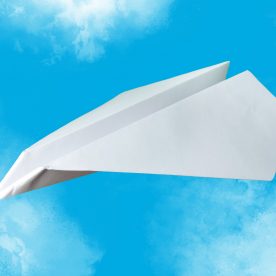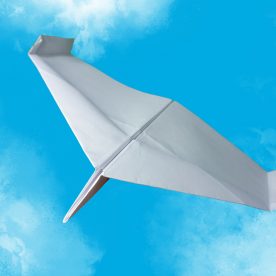The science behind paper planes is quite fascinating, and it can help us understand the principles of flight and how to design the perfect paper plane. In this article, we will delve into the factors that affect the flight performance of a paper plane, including its shape, weight, and aerodynamics. We will also provide some tips for making the perfect paper plane.
First, let’s discuss the shape of a paper plane. The shape of a paper plane plays a crucial role in its flight performance, as it determines the lift and drag forces that act on the plane. Lift is the upward force that opposes the weight of the plane, while drag is the resistance that the air exerts on the plane as it moves through the air.
The lift force on a paper plane is generated by the difference in air pressure on the upper and lower surfaces of the wings. When air flows over the wings, it moves faster over the upper surface than the lower surface, which creates a lower air pressure above the wing and a higher air pressure below the wing. This pressure difference generates an upward force on the wing, known as lift.
The drag force on a paper plane is generated by the friction between the air and the surfaces of the plane. As the plane moves through the air, the air molecules rub against the surfaces of the plane, generating a resistance force that slows down the plane.
The shape of the wings and the body of the paper plane determine the lift and drag forces that act on the plane. A paper plane with long, slender wings and a streamlined body will have a higher lift-to-drag ratio, which means that it can generate more lift while experiencing less drag. This will allow the plane to fly further and stay in the air for a longer period of time.
The weight of a paper plane also plays a role in its flight performance. The weight of the plane determines the gravitational force that acts on the plane, which is the force that pulls the plane down towards the ground. A heavier paper plane will experience a stronger gravitational force, which will cause it to fall faster. On the other hand, a lighter paper plane will experience a weaker gravitational force, which will allow it to stay in the air for a longer period of time.
The aerodynamics of a paper plane also affect its flight performance. Aerodynamics refers to the study of the motion of air and the forces that act on an object moving through the air. The aerodynamics of a paper plane are determined by its shape, size, and orientation, as well as the speed and direction of its movement.
A paper plane with good aerodynamics will be able to fly smoothly and efficiently through the air. It will have a low drag force, which means that it will experience less resistance from the air, and it will be able to generate more lift, which will allow it to stay in the air for a longer period of time.









